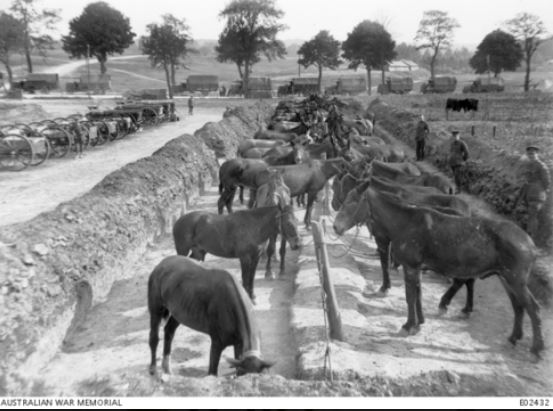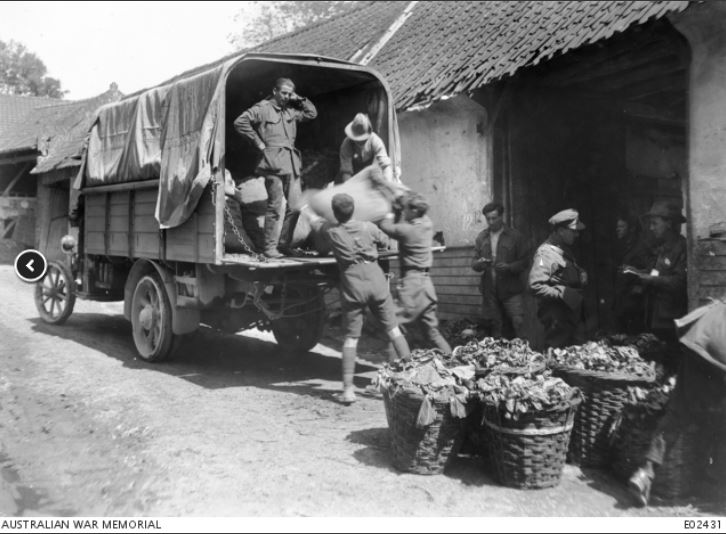5th Division Train
From Our Contribution
Contents
[hide]Brief History
The 5th Division was formed in Egypt during February 1916 as part of the expansion of the Australian Imperial Force infantry Brigades. In addition to the existing 8th Brigade, the new 14th and 15th Brigades which had been raised from the battalions of the 1st and 2nd Brigades respectively were added. Division (and Brigade) Trains were logistic support and supply units under Command of the Division to which its numeric designator corresponded. Without logistics there is no combat. Ammunition, food, water and equipment supply and maintenance are vital components of the combat power of an Army. Division Trains were a prime mechanism to ensure the Army could move and fight. The tasks of the trains and motorised columns varied. The basic tasks of train companies were to carry baggage and resupply food, forage and water for the headquarters and units of the division.
The 5th Division Train comprised the following elements: 7th Army Service Corps Company; 14th Army Service Corps Company; 26th Army Service Corps Company; 27th Army Service Corps Company; 4th Division Ammunition Sub Park; 4th Division Supply Column; and the 4th Division Veterinary Section; In addition the Train companies supported Division units with a wide variety of general tasks from providing drivers for formation headquarters and field ambulances to carting roadmaking materials and engineer stores, operating snow ploughs, providing transport for postal deliveries, repairing unit equipment, and operating ad hoc pack transport units. The supply columns and ammunition sub-parks, in addition to their basic tasks, hauled lumber, road metal, ordnance and postal cargo, petrol, quicklime, rails and medical comforts, as well as emergency mass medical evacuation and incidentally filling in as medical assistants at dressing stations.
From Egypt the division was sent to France, where they served in the trenches along the Western Front. Divisional support units were raised at the same time and subsequently as suitable men were identified.
On formation in February 1916, the 5th Division joined II Anzac Corps, but their artillery pieces and trained staff went to France with the other Divisions leaving the 5th Division to recruit and train from the beginning, delaying their entry to France.
The 5th Division began arriving in France in July 1916, and at this time the Battle of the Somme was underway and going badly for the British. The three Australian divisions of I Anzac Corps, which had been acclimatising on the quiet sector near Armentières, had been sent to the Somme as reinforcements and so the 5th Division took their place at Armentières on 12 July 1916.
The result of this move was that the 5th Division, the most inexperienced of the Australian divisions in France, would be the first to see major action in the Battle of Fromelles, a week after going into the trenches. There they sustained very heavy casualties attacking the 'Sugarloaf Salient' and would be ineffective as a fighting force for some time afterwards (October 1916). Casualties numbered 5,533 in 24 hours, the greatest loss of lives in a 24 hour period in or history.
5th Division units participated in the Second Battle for Bullecourt; Polygon Wood; Villers-Bretonneux; Amiens; Mont St Quentin; Hindenburg Line. Eight men died while posted to the 5th Division Train, four due to enemy action, three accidentally and one suicide.
Unit Personnel
- William Michael Bowman 4 Jan - 28 Oct 1918
- Sidney Hart 30 Jan - 19 May 1919
Individual Honours
Notes


